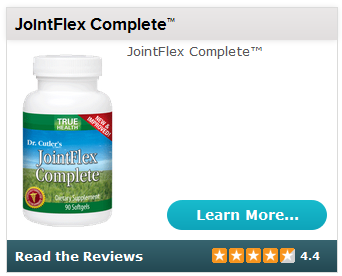Synovial fluid is a thick, stringy fluid found in the cavities of synovial joints. With its egg-like consistency (“synovial” partially derives from ovum, Latin for egg), synovial fluid reduces friction . . .
between the articular cartilage and other tissues in joints to lubricate and cushion them during movement.
The inner membrane of synovial joints is called the synovial membrane and secretes synovial fluid into the joint cavity. This fluid forms a thin layer (roughly 50 μm) at the surface of cartilage, but also seeps into microcavities and irregularities in the articular cartilage surface, filling all empty space. The fluid within articular cartilage effectively serves as a synovial fluid reserve. During movement, the synovial fluid held within the cartilage is squeezed out mechanically to maintain a layer of fluid on the cartilage surface (so-called weeping lubrication).
[Source: http://en.wikipedia.org/wiki/Synovial_fluid, accessed on November 3, 2008]
Synovial Fluid – A built-in lubricating system
Behind your kneecap, where the thigh bone and shine bone meet, a tough fibrous membrane encloses the joint capsule. Lining the joint capsule is an inner synovial membrane that produces synovial fluid.
Synovial fluid works like motor oil (or brake fluid), keeping the cartilage that cushions the bone ends soft and slippery so the bones don’t grind against each other when you bend, flex and walk. And because your cartilage, unlike most other structures in your body, has no independent blood supply, it also depends on synovial fluid to deliver the nutrients it needs to remain resilient and smooth. One of those nutrients is hyaluronic acid.
Synovial Fluid – Fills Healthy Knee Capsule
The 2 milliliters of synovial fluid that fill a healthy knee capsule typically contain 5 to 8 milligrams of hyaluronic acid. Persons with osteoarthritis of the knee typically have one-half to one-third less hyaluronic acid than most people do.
Reduction of Synovial Fluid and Hyaluronic Acid
When hyaluronic acid concentrations drop to this low level, the viscosity (the stickiness) and the elasticity of the synovial fluid are reduced. This affects its shock-absorbing power… which in turn makes the joint a lot more vulnerable to injury.
Hyaluronic Replenishment
By replenishing hyaluronic acid levels in the synovial fluid, viscosupplementation injections make it thicker and stickier and enhance its lubricating power. . .
Hyaluronic Acid Natural Source
There is in fact a form of hyaluronic acid that you can take orally. It comes from the same rooster combs used to make the viscosupplementation injections. (Oddly enough, rooster combs are one of nature’s richest sources of hyaluronic acid. Hen’s combs contain hyaluronic acid also, but not as much. . . This may not be appropriate for people who are allergic to feathers, eggs or poultry.)
Before you take any supplement, please consult your physician or other licensed health care professional to determine if it’s appropriate for you.
These statements have not been evaluated by the Food and Drug Administration. This product is not intended to diagnose, treat, cure or prevent any disease.
Source:http://www.ivlproducts.com/pdf/ABJ708.pdf, pp. 3, 5

… Banish Your Arthritis in Just One Month! Click Here
